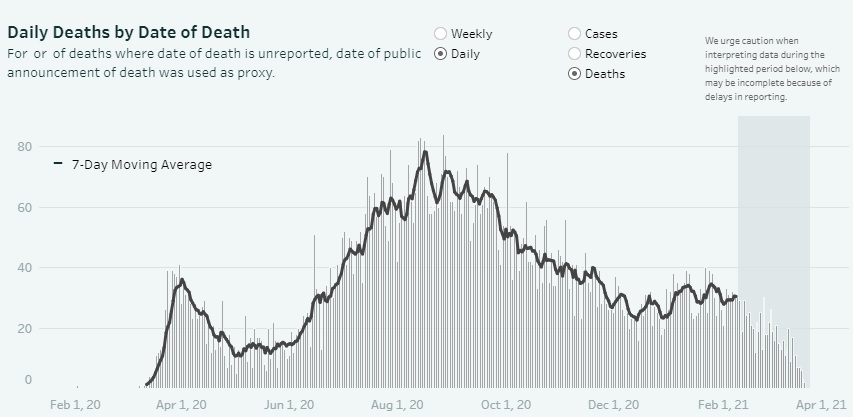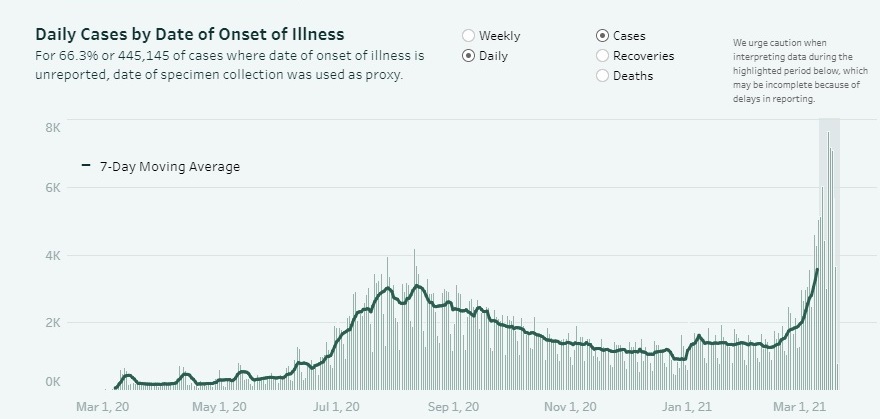The following article was written by Jay Bhattacharya and Christos Makridis. It was published on December 3, 2020 by The Hill.
In this article, the authors criticize mainstream media for its focus on negative news. They say, “the American press has been unrelentingly negative in its COVID coverage, even when there is good news to tell. That negative is part of what fuels a culture of fear that affects local, state and federal politicians and the decisions they make”.
The authors go on to relate some of the promising statistics relating to COVID-19 – the sharp decline in case fatality rate, the high survival rate for people over 70 years, and an even higher survival rate for individuals below 70 years, the news of new therapeutic strategies, and improved management of outpatients.
The authors says that “the neglect of the good COVID news breeds panic and fear”. The imbalance in media reports regarding the new developments about COVID vis-a-vis increasing cases has led to the downplaying of the costs of continuing lockdowns and has contributed to even greater human misery.
Editor’s Note: Though written three months ago, we are now seeing the impact of the issues raised by the authors. If the media has not realized it yet, this article drives home the reality that the narrative that mainstream media subscribes to has the power to end or extend the scamdemic. In the face of “increasing cases” in many countries, some citizens are now calling for the return of lockdowns, as well as the faster rollout of the vaccine. This only proves to us that indeed, as long as the media focuses on fear mongering, instead of truly educating citizens, then this pandemic will not end [of course, the false positives due to faulty testing also contribute to this never-ending pandemic, see Faulty COVID-19 tests: Why prisoners love their jailers and never-ending lockdowns and Why COVID-19 is guaranteed to never end].
As long as we rely on Facebook and Google for news, people will never realize that things are getting better. Take for example the case of the Philippines.
Over the past weeks, deaths continue to decline in the Philippines, and health outcomes are much better compared to previous months. More people who test positive for the virus experience mild to no symptoms. Bed capacity have also increased, and there is enough mechanical ventilators that can be used for those experiencing severe symptoms. These should all be seen as encouraging data, right? People should be rejoicing that the virus is under control.

Infographic from the Department of Health.

Graph from the Department of Health.

Graphics from the Department of Health.
And yet, the National Capital Region, where Manila is located, have newly re-imposed mobility restrictions. Meanwhile, several areas with no real increases in cases are also reimposing lockdowns as a “precaution”. All these because they were focusing on only one statistic: the number of cases. But if we combined all the statistics we collect on COVID-19, shouldn’t we feel more confident in reopening cities? Despite the “increasing cases”, our hospitals are not overwhelmed and people are not dying due to the disease. Wasn’t this the goal? Or were we thinking we could fully eradicate SARS-CoV-2 within our borders? In that case, we are living in a dream. [The zero covid movement does not understand the cost of this dream, see Inside the Zero Covid Cult. Also read, One year in lockdowns but governments still not in control of COVID-19].

Graph from the Department of Health.
Read Online
Click the button below if you wish to read the article on the website where it was originally published.
Read Offline
Click the button below if you wish to read the article offline.
